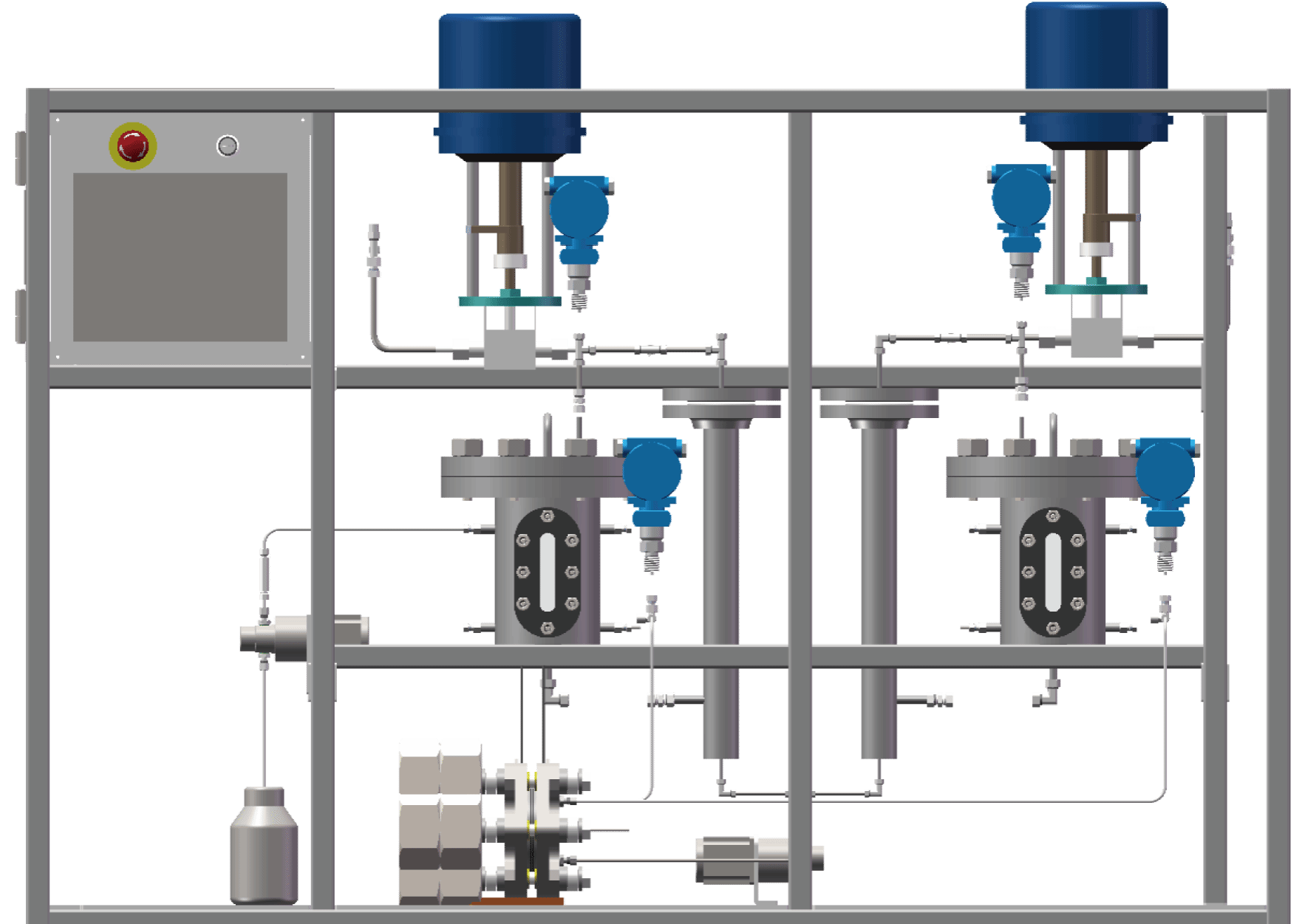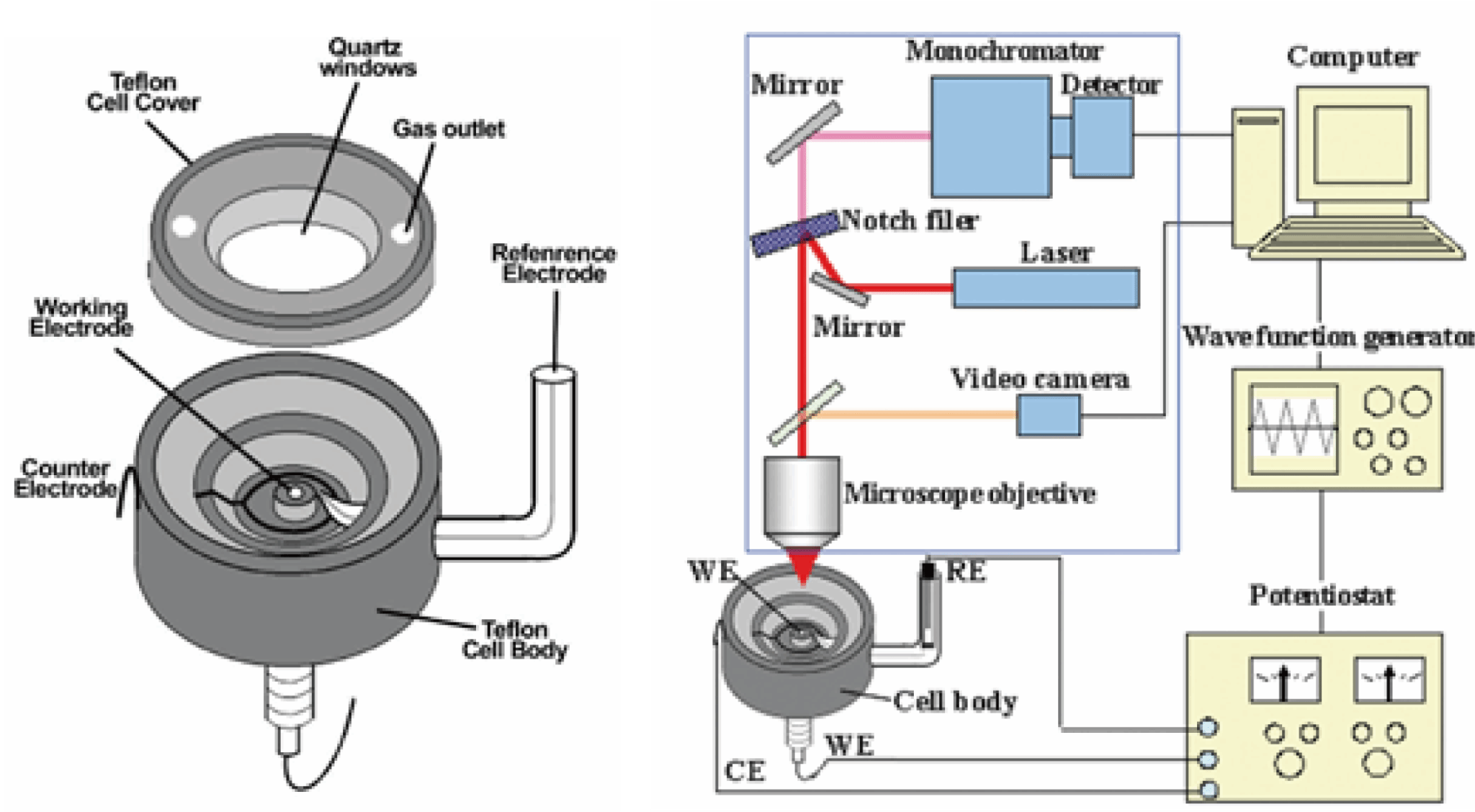Our group is dedicated to advancing operando characterization techniques, integrating electrochemical, spectroscopic, and computational approaches to decode dynamic interfacial processes in catalysis, energy conversion, and surface science. Below are our core research directions and breakthroughs:
1. By employing in-situ EC-SERS, we reveal surface reconstruction process occurred on core-shell nanoparticles during electrocatalytic process and tailor electrolyte-catalyst synergy to enhance electrocatalytic selectivity, driving sustainable electrocatalytic solutions.

2. Developing dynamic control strategies for alkaline tanks, achieve real-time and precise control of multiple parameters in alkaline tanks, and enhance the coupling fluctuation of renewable energy capacity for alkaline hydrogen production.

3. Design and development of an electrolytic cell device integrating electrochemical testing and spectroscopic testing, and its successful application in relevant EC-SERS.

All-solid-state batteries(ASSBs) use solid-state electrolyte(SSE) instead of the traditional flammable and explosive organic electrolyte, which is expected to realize high safety and long cycle under the condition of high energy density. However, the use of SSE also essentially changes the physicochemical process of the battery, such as the ion transport and the interface electrochemical reaction, and thus faces a brand-new challenge different from that of the traditional lithium-ion battery.
Our group is interested in the ion interfacial transport law, solid-solid interfacial behavior, and redox reaction paths of electrode materials during charging and discharging in all-solid-state batteries, and in order to study the above laws, we focused on the development of spectroscopic techniques with high temporal and spatial synchronization and multiple characterizations under in-situ conditions.The detailed research interests are the following aspects:
1. Design of Raman spectroscopy cells based on inorganic and polymer electrolyte systems to characterize the solid-solid interfacial evolution of all-solid-state batteries and understand lithium-ion transport using line-scan Raman.

2. Developing single-particle electrochemical and operando full-wavelength resonant Raman system, for realizing the characterization of the intrinsic structure-activity relationship of individual active particles in commercial batteries.

3. The structural evolution of lithium-rich layered oxide electrode materials was studied by in-situ Raman spectroscopy, providing insights for improving the performance of lithium-rich materials.
